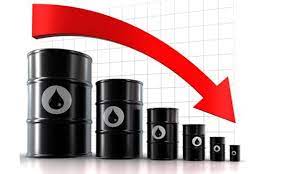Oil prices slipped on Friday after Hurricane Rafael, which had prompted fears of a major disruption to U.S. oil production in the Gulf of Mexico, weakened and began moving away from key oil fields.
The decline in crude futures came as traders reassessed the potential impact of the storm and turned their attention to broader geopolitical factors, including the expected energy policies of President-elect Donald Trump, which could have lasting effects on global oil supplies.
As of 0446 GMT, Brent crude oil futures were down 47 cents, or 0.6%, to $75.16 per barrel, while U.S. West Texas Intermediate (WTI) crude dropped 55 cents, or 0.8%, to $71.81 per barrel.
The declines followed a modest rally on Thursday, when oil prices had risen by nearly 1% on expectations that President-elect Trump’s policies might further tighten oil supply from major exporters like Iran and Venezuela.
Hurricane Rafael, which had earlier caused a shutdown of over 391,000 barrels per day of U.S. crude oil production, was forecast to weaken and drift westward over the Gulf of Mexico, moving away from key U.S. oil fields.
The U.S. National Hurricane Center confirmed that the storm would weaken through the weekend, diminishing the immediate risk to offshore production.
The easing of the hurricane threat allowed for a recalibration of market sentiment, with oil traders reassessing the severity of potential production disruptions.
The initial concerns about the storm had supported prices earlier in the week, as traders anticipated that any significant disruption in U.S. Gulf production could tighten global oil supplies, particularly in an already volatile market.
However, the improved outlook for the storm, combined with expectations that production will quickly resume, took the edge off price increases.
At the same time, the broader market remains focused on the impact of President-elect Trump’s policies on global oil supply.
During his campaign, Trump expressed intentions to impose stricter sanctions on countries like Iran and Venezuela, both key oil exporters, potentially limiting their ability to produce and export crude.
These anticipated actions by the incoming administration are seen as a bullish factor for oil prices, as supply cuts from these countries could exacerbate an already tight oil market.
Despite the dip in prices, analysts remain divided on the long-term outlook. The combined effect of Hurricane Rafael’s reduced threat and Trump’s energy policy plans could keep oil prices volatile in the near term, particularly as geopolitical tensions and supply risks continue to linger. Additionally, OPEC’s production cuts and global demand uncertainties—especially in the face of economic slowdowns in key markets like China—will play a crucial role in shaping oil price trends.
As the market heads into the weekend, traders will be closely monitoring further updates on the hurricane and any developments regarding Trump’s policies toward oil-producing nations.
The balance between short-term weather-related disruptions and long-term policy-driven supply constraints will likely continue to drive oil price fluctuations in the coming weeks.















